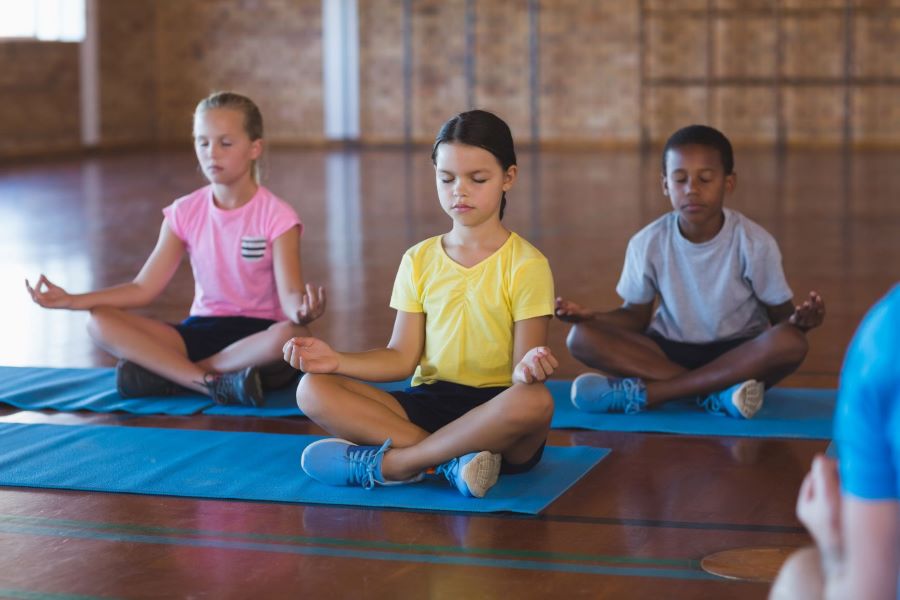CSCH Affiliate Melissa Bray is one of the directors of the UConn Mind-Body Health Research Interest Group. Bray recently answered some questions about how she got interested in mind-body health (MBH), why it’s beneficial and how schools can incorporate MBH interventions into their SEL curriculum.
How did you get interested in Mind-Body Health and how do you define it?
I became first interested in Mind-Body Health as I considered the psychological effects (e.g., anxiety) on physical health outcomes (e.g., asthma and cancer). I began with studying the effects of psychologically-based treatments on the lung functioning of students with asthma. I continue to do asthma research amongst other MBH areas where the term, ‘Mind-Body Health’ includes prevention, assessment, intervention, and consultation best implemented within an interdisciplinary and collaborative team approach. So MBH fits well within an integrated behavioral health framework, which is an intersection I am particularly interested within the field of school psychology.
Tell us why a MBH focus is beneficial.
There is mounting empirical evidence revealing the positive effects of MBH practices that improve psychological, physical, academic, and communication outcomes. The success of mind-body interventions is related to common elements such as deep breathing and focused attention. These treatments have shown success with anxiety, depression, stress, inattention, subjective well-being, happiness and quality of life indicators and particular physical health outcomes related to diabetes, sleep, chronic pain, cardiovascular disease, epilepsy, arthritis, asthma and cancer. Of importance, the learning technologies of video self-modeling and virtual reality promote psychological, educational, and physical well-being. These learning technologies are also useful in establishing non-biased communication between students and educators, as well as doctors and patients, in an effort to reduce the myriad of obstacles related to stigma, bias, and various stereotype threats.
You have been piloting psychology-based treatments in schools. Tell us about those.
I have been investigating MBH interventions that include:
- relaxation and guided imagery
- culturally sensitive meditation
- physical activity
- standardized progressive muscle relaxation
- yoga
- mindfulness
- gratitude writing
- video self-modeling
- immersion in nature
- written emotional expression
- virtual reality
These interventions have been successfully applied to various outcomes such as lung functioning, anxiety, depression, inattention, academic engagement, and disruptive behaviors, amongst others.
Tell us more about the effects of MBH interventions on asthma and anxiety.
Mind-Body Health interventions have been effective in decreasing symptoms for individuals with asthma. Prior research I have conducted has addressed the psychological aspects related to this medical condition, using guided mental imagery and progressive muscle relaxation (RGI) amongst other mind-body health treatments such as written emotional expression. The findings demonstrate improvements on both psychological and physiological variables, including increased lung functioning (using standardized spirometry, a typical medical test used to evaluate how a patient’s lungs are functioning) and noted improvement on measures of happiness and quality of life indicators as well as decreases on measures of anxiety. Currently, I am carrying out a replication study and providing an invited presentation to the Association of School Nurses of Connecticut on anxiety in relation to the initiation and exacerbation of asthma symptomatology.
How do you think that schools could incorporate more MBH interventions into their SEL curriculum?
Social-emotional learning (SEL) includes many skills, such as self-awareness, self-management, social regulation, social awareness, relationship skills, and responsible decision making. Social-emotional variables such as anxiety, depression, stress, subjective well-being, quality of life, and happiness as well as related physical outcomes such as visits to school nurse’s office, stomach aches, or breathing issues can be effectively remediated within SEL curricula. An example would be a whole classroom-based application of meditation, relaxation and guided imagery, and/or mindfulness audios played for the classroom of students to increase positive thinking and reduce related physical problems. Overall, MBH interventions are relatively simple-to-implement, low-cost techniques to provide to students when engaging in social and emotional learning skills.
And how can families continue the MBH focus at home?
Within the field of school psychology and school-based mental health more broadly, communication is critical. Partnerships between schools and families must contextualize relevant home-school factors, including various parent and child considerations. The majority of mind-body health treatments can be implemented in both the school and home settings. They are not time intensive or financially prohibitive, are relatively simple to use, and are effective with youth and their families. These MBH practices are especially relevant during the pandemic as many families have faced significant stress facilitating their child’s education. When students and families face unprecedented times and chronic stressors MBH interventions can support not only children’s response to stress, but also support the caregivers in self-care and coping tools. For example, families together can engage in mindful breathing when anxiety-provoking situations arise.
How can people find out more about the UConn Mind-Body Heath Group?
Please visit the MBH website at InCHIP, attend one of our bi-monthly meetings–which are publicized, or come to a lecture. Contact me if you would like to be involved with the MBH RIG’s community outreach, education, and research plans. You can also visit my MBH research page for more information.
